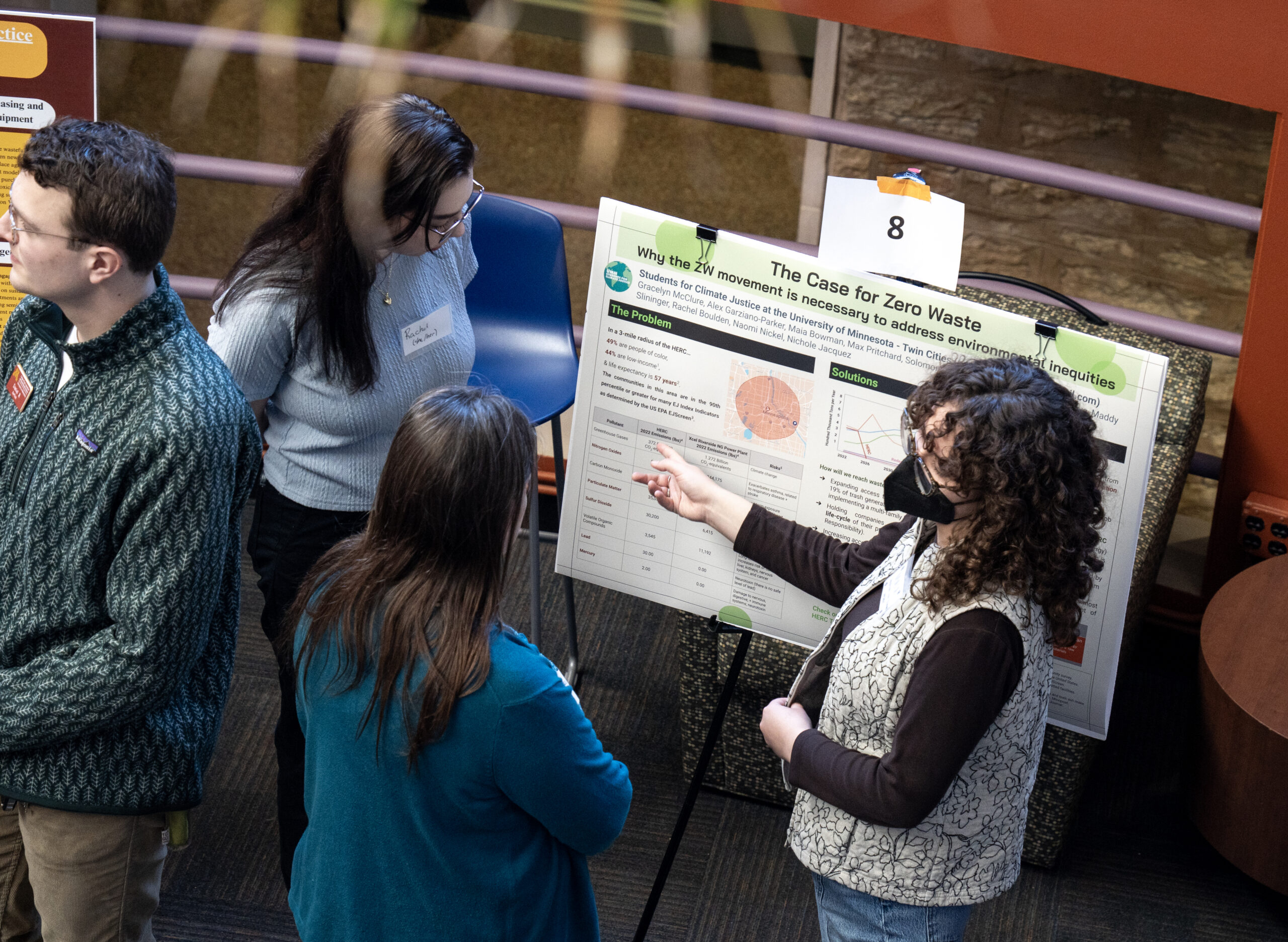By Maddie Robinson, Catie Sullivan, Sam Moser and Peter Wilhelmi Roeder
Sophia Fredeen, a senior at the University of Minnesota, picked up tennis as a hobby and considers it to be a “serotonin boost,” especially when she gets to be outside.
Currently, Fredeen is enrolled in a university tennis class, where they were able to practice much earlier than normal this semester because of the warmer temperatures. According to a report by MPR News, this past winter was 10 degrees warmer than average in the Twin Cities.

While tennis can be played both indoors and outdoors, Fredeen stressed the importance of environmental factors on the game. She finds that practices are better and more effective when outside, and loves how frequently she has been able to play this year.
“You can play tennis inside, but it’s so helpful to have the wind,” Fredeen said. “It’s overall better to get out earlier in the season; the more time you have, the better you play.”

Despite Fredeen’s gratitude for the warm weather, she still has concerns about the seemingly out-of-the-ordinary temperature changes. As a biosystems engineering student, she is profoundly interested in climate change and is acutely aware of its effects on the planet.
Fredeen isn’t alone in her worries about the climate.
On a scale that measures worry about climate change from one to five, one being not worried and five being extremely anxious, 76.5% University of Minnesota students rated themselves as a four or a five, according to a poll of 111 respondents.
In contrast to tennis, a sport normally played in warmer conditions, athletes who play winter sports were sad their seasons got cut short.
Alfonso Amores, a senior and alpine skier, has been skiing since he was little and started competing when he was eight years old. As a member of the University’s alpine ski team since his freshman year, he was disappointed that the warmer weather prevented him from finishing his college athletic career strong.
“A couple days of 35 degrees is fine, but not when they’re consistent like they were this year,” Amores said.
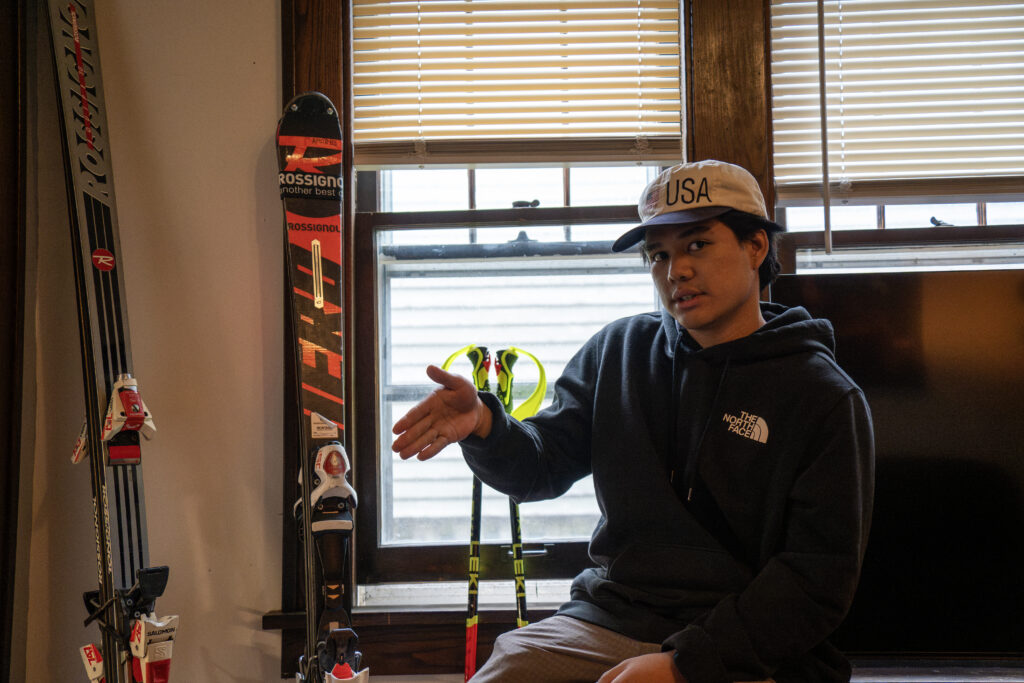
Alfonso Amores, a member of the University of Minnesota alpine ski team, shows off his ski gear in Minneapolis, Minn., on April 26, 2024. Photo by Catie Sullivan.
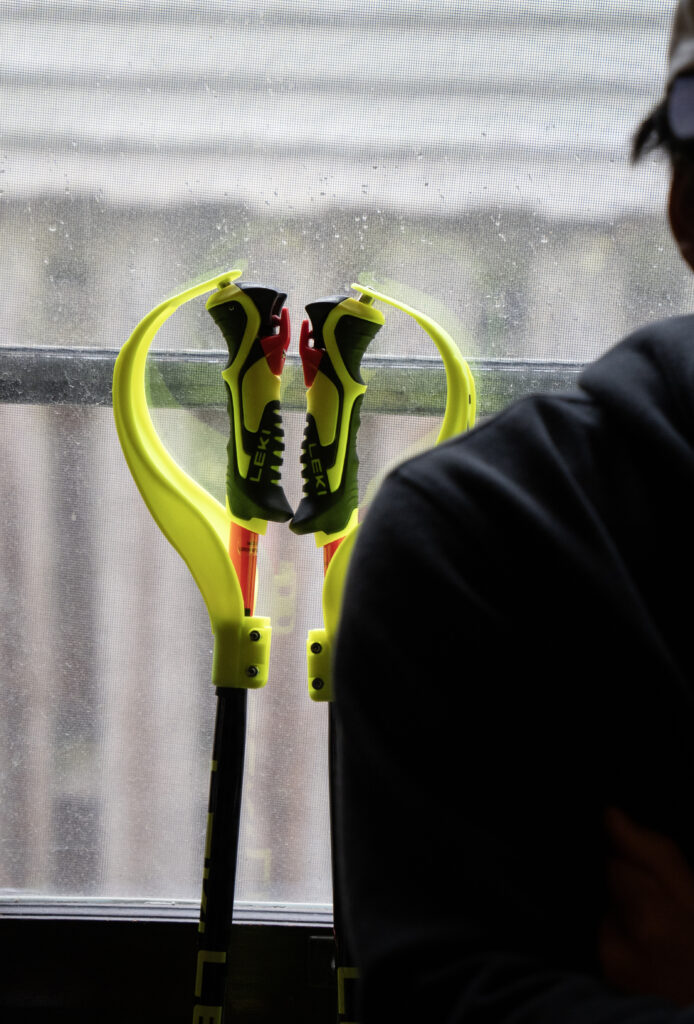

Since alpine skiing relies on snow cover for proper conditions, this year's lack of snowfall led to rocks and other debris breaking down skis. Amores said he had to get his skis professionally fixed twice this season, something he has never had to do before.
Due to the current track record Minnesota has been having with the climate, Amores said he doesn’t know if it will be worth it to buy a season pass to ski slopes next winter. He added he felt hopeless about weather conditions getting better in the near future, a sentiment many University students share.
Students primarily feel negative emotions when they think about climate change, which can greatly affect mental health and can bring about feelings of helplessness about the issue.
“In my opinion, I believe the earth is slowly dying which means humanity is slowly dying. That’s a lot to think about, and it could affect someone mentally,” Ashley Knettle, a freshman, said.
Other students, like freshman Kate Brantseg, also feel hopeless about climate change and find it hard to balance caring about the environment while simultaneously taking care of one’s wellbeing.
Brantseg on Hopelessness:
Like Brantseg, students feel insignificant in the grand scheme of the broader climate change issue, yet want to keep doing their individual part to mitigate their own environmental impact.
“For me personally, it is on a small scale,” Gabby Stageberg, a senior at the University, said. “I’m thinking about plastic bags and how much gas I’m using.”
Stageberg added that personal sacrifice can be another way to reduce her carbon footprint. As a fashion enthusiast, she can’t help but recognize how dangerous the fast-fashion industry, a business model where corporations mass produce on-trend clothes for a low cost, can be for the environment. Thus, she has started to limit her clothing consumption.
Stageberg on Sustainable Fashion:
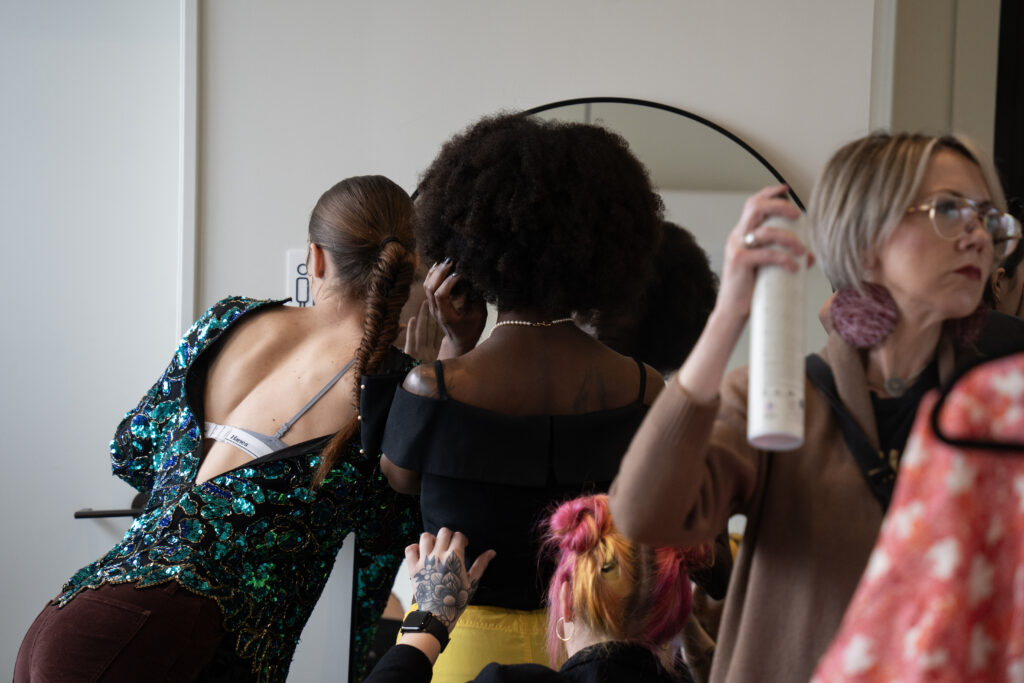
Similar to Stageberg, students like Ian Friske, a business student at the University and an aspiring creative director, take sustainability seriously when it comes to fashion.
Friske is a fashion designer for Golden Magazine, a student-run fashion and lifestyle magazine at the University, and recently produced his own fashion show that raised money for food insecurity initiatives.

Despite the fact that he started designing less than a year ago, he makes sustainability a priority in his creations by thrifting old clothing and handmaking his fashion designs using a pre-owned sewing machine.
In addition to his creative projects, Friske also prides himself on his personal sustainability efforts. He said he has never bought from fast-fashion giants like SHEIN, Zara and H&M, and has not bought a new clothing item in over a year.
“There's so many garments on earth, I don't believe we need to make more,” Friske said.
Friske added the constant need to follow trends that young people feel fuels the fast-fashion industry and contributes to the climate crisis. However, taking small actions like reducing clothing consumption is just one way students can become more sustainable.
Polling shows the vast majority of University students surveyed do some form of action to reduce their climate impact, like recycling, walking, biking, using public transportation or reducing their energy usage. Only 5.4%, or six respondents, said they didn’t do any of the pre-written actions.
On top of individual students doing their part to reduce negative climate impact, larger student organizations are also making contributions to educate and engage other young people with the issue.
Students for Climate Justice is a university student organization that focuses on a variety of environmental justice issues, like the Hennepin Energy Recovery Center (HERC), the controversial trash-burning facility near Target Field, according to Max Pritchard, a member of the group. Founded in 2019, the organization also advocates for a university-wide zero waste plan, divestment from fossil fuels and works to raise awareness while organizing student support for environmental justice movements in the Twin Cities.
Pritchard has been a member since his freshman year and is now an officer. As the climate crisis continues, he considers groups like Students for Climate Justice a good way for young people to get involved with environmental movements, even without prior experience.

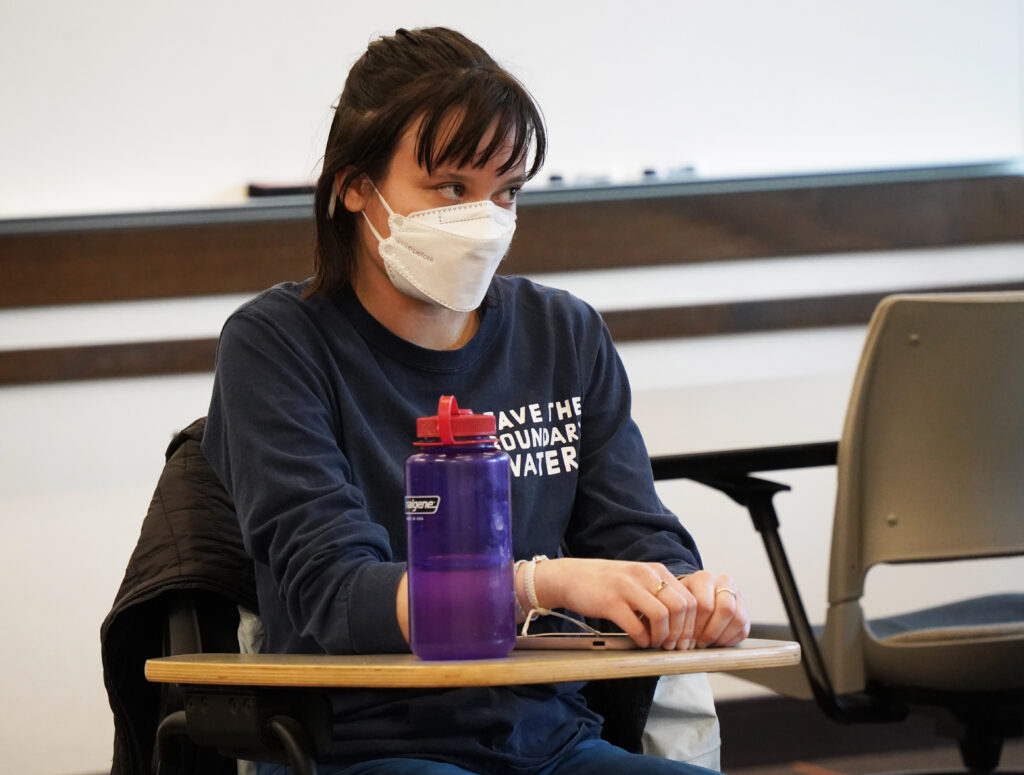

“It’s a student group that is very much a good starting point, I think, for students,” Pritchard said. “A lot of us didn’t have activism experience beforehand and it’s been a really great way to learn about that.”
This year, Students for Climate Justice was able to collaborate with the University’s Institute on the Environment (IonE), an organization that works toward a sustainable future through various initiatives, for their annual Sustainability Symposium. According to the Institute’s website, the symposium “brings together diverse sustainability projects, artwork, research and other ideas at one platform.”
This year’s theme for the symposium was “Making Minnesota: Towards Equitable Urban Design,” which centers themes of environmental justice and its intersection with urban planning. Students for Climate Justice was able to put together a panel of climate justice activists and educators for the event, as well as help volunteer at and promote the symposium, according to Pritchard.
“It’s been really cool, this year’s [symposium] has tripled the registration that last year’s did, which is really great," Pritchard said. "I think it shows that people are excited by the opportunity to learn more about climate justice."
I feel anxious, but hopeful. There's obviously a lot to be stressed about, but I think there is work being done across the world that is really encouraging, and I am hopeful that that work will continue to be supported and will expand and that people will continue to get involved in fighting for a more sustainable, better future.
Max Pritchard
Michelle Garvey, a professor who teaches environmental justice at the university, is an unwavering supporter of student activism, both on-campus and off. As someone who has worked in the climate sphere for decades, she encourages continued student engagement.
Garvey believes each student has something to contribute amidst the climate movement.
While activism is primarily seen as rallying and speaking at meetings, Garvey said people like artists and writers have an important place in climate advocacy. Creating art like comics or paintings and writing letters to editors or to elected officials are various ways that Garvey said students can get involved with activism if they are more introverted or don’t want to be on the forefront of protests or government meetings.

“There are folks who are creating murals together, there are folks who are creating protest signs, cause maybe they don’t want to be at the front of a rally, but they want to create the beautiful images and the beautiful communications and messaging that are displayed at those rallies,” Garvey said.
Since the University is located in the center of the Twin Cities, Garvey recognizes that students have unique access to what is happening both on and off-campus. Connecting and collaborating with community movements, collectives and advocates surrounding the university is key for students to get involved with every aspect of climate activism.
Garvey on Hope:
Ultimately, Garvey said young people’s passionate efforts are a major motivator for her work within the climate movement.
“The thing that provides me the most motivation and comfort is seeing people show up to often boring community meetings, governmental meetings, rallying at the state capitol, reaching out to legislators and the steadfast commitment that excites me,” Garvey said.
